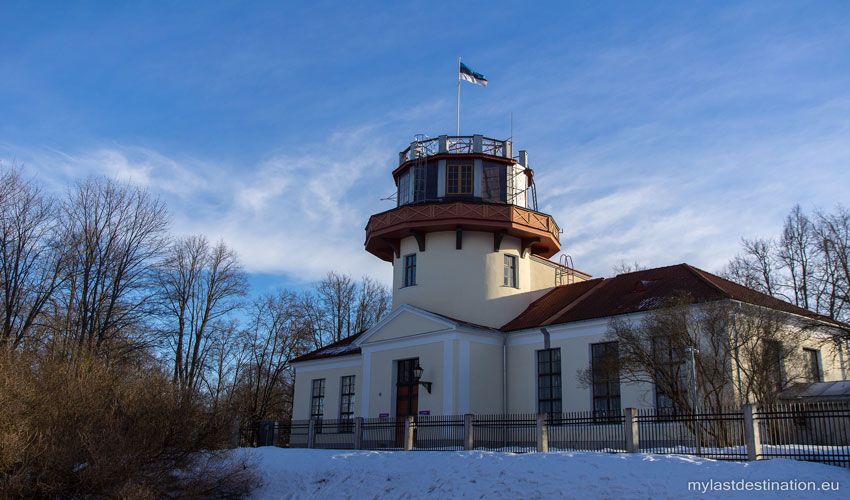Your virtual trail of discovery of hidden gems in Estonia takes you from a hill of crosses, created as a religious tribute to the unseen, to one of a scientific undertaking dedicated to charting the heavens. Welcome to the Tartu Observatory.
Photo by Guillaume Speurt
Sounds interesting. How is it different from other observatories?
In many ways: not only is this venerable building Estonia’s largest and oldest astronomical observatory (it was founded in 1802, when the university it’s linked to reopened after a long hiatus in the 18th century), but it also contains the first point in the Struve Geodetic Arc, which comprises a series of survey triangulations that mark the first accurate measuring of a meridian.
Never heard of it. What was this in aid of?
The Struve Geodetic Arc is scientific venture of colossal proportions: its aim was to help measure the exact size and shape of the Earth, to confirm of refute Sir Isaac Newton’s assertion in the 17th century that our Earth might not be a perfect sphere, but rather an ellipsoid „potato” shaped object slightly squashed at the poles.
Why did Newton think so?
Newton being Newton, he was acutely aware of the effect of gravitational forces on all bodies great and small, as well as of the fact of Earth’s spin on its axis. (His initial suspicions were duly confirmed by early expeditions to Lapland and Peru.)
Okay. So what do we know about the Struve Geodetic Arc?
It was named after Friedrich Georg Wilhelm von Struve, a German-born Russian astronomer and geodesist, who was in charge of this project. The Arc comprises a series of points surveyed between 1816 and 1855 that span over 2,820 kilometers from the north coast of Norway to Ismail on the Danube, along the meridian that passes through the city of Tartu. Originally, it comprised 265 geodetic points and 258 main triangles, of which only 34 points survive to this day. The main points are marked by iron crosses, drilled holes in rocks, obelisks and commemorative plaques.
Sounds impressive, I have to say. Especially for that era.
Indeed. This experiment was by far the greatest such survey in its day. Its results had great repercussions on geodetic measurements, geography, cartography, and other related fields. Amongst other things, it made possible the development of accurate modern topographic maps. The Struve Geodetic Arc produced measurements of striking accuracy; some remained in use even in the second half of the twentieth century. Because of this, the Struve Geodetic Arc is rightly listed as UNESCO World Heritage Site. If you’d like to find out more, the observatory have published an ebook detailing their illustrious 200-year history, including its history of construction, the telescopes used there, the peak times of Estonian astronomy, and other branches of science connected with it.
Hmm. I might check it out! Is the Tartu Observatory open all year round to receive visitors?
It is. Also, it has grown into much more than an observatory. Today, it is a public research institute that runs a range of educational activities, such as interactive learning programs, student conferences, public seminars, even a science summer camp and many more. Check out their website here; it’s incredibly clear to navigate.
If it inspires you to come and see it „in the flesh” too, you may like to join us on our next Baltic Run, and discover many more hidden gems along the way.
